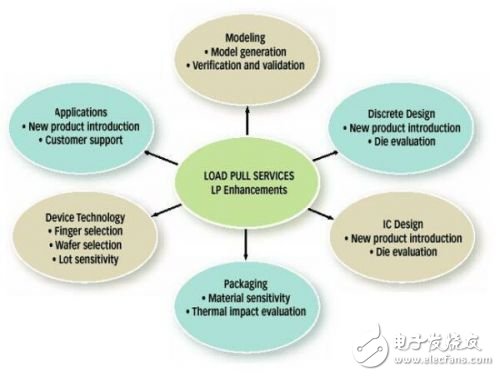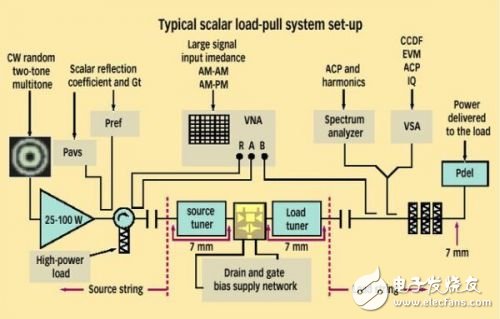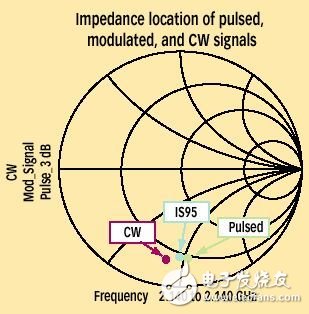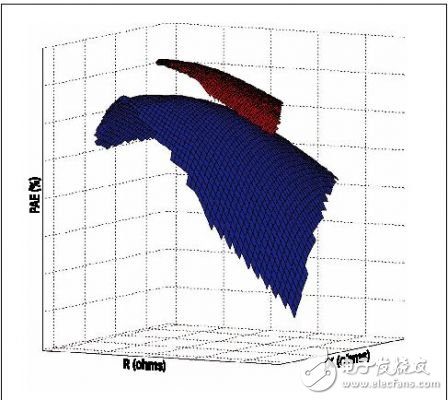To meet the needs of transistor users, the power density of active devices continues to increase. Commercial wireless communications, avionics, broadcast, industrial, and medical system applications are driving solid-state power packaging as smaller output stage devices output higher output power requirements. For Freescale Semiconductor, providing high-performance RF and microwave transistors for these applications is not a big challenge, and the company's products offer significant advantages in terms of features, packaging, and application engineering.
Freescale Semiconductor has a strong presence in the production and sale of discrete and integrated RF semiconductor devices. The company's seventh-generation silicon RF out-of-band diffusion metal oxide semiconductor (LDMOS) with HV7 technology has the output power and linear performance of the WiMAX infrastructure in the 3.8 GHz range. Freescale's high-voltage HV7 process for industrial, scientific, and medical (ISM) applications supports 48V operation. The company also extends the operating frequency of its high-power GaAs PHEMT devices to 6GHz for WiMAX amplifiers.
Recently, Freescale Semiconductor announced the first two-stage radio frequency integrated circuit (RF IC) with 100W output power. When driven by the company's cost-effective MMG3005N general purpose amplifier (GPA), the MWE6IC9100N and MW7IC181 00N RF ICs form a complete solution for 100W power amplifiers for wireless base stations operating at 900 and 1,800 MHz.
While the performance of these discrete and integrated RF power devices is excellent, putting these devices into the hands of customers is only the beginning. In fact, every test delivery will be supported by Freescale's technicians for testing, modeling, packaging, and application support.
RF power characteristicsLoad pull measurement techniques have become increasingly popular in recent years, and are commonly used to measure RF power amplifier parameters such as peak output power, gain, and efficiency over various complex load conditions present in the device reference plane. . It is also becoming more common to use a variety of complex modulation signals in the same measurement environment. For high-power RF semiconductor manufacturers, it is difficult to accurately characterize the product. At the same time, the development of such devices must also use large peripherals. This type of equipment is typically 60mm with a terminal impedance of less than 0.5Ω and a quality factor (Q) between 8 and 10.
Freescale's RF department has developed several techniques to enhance accuracy and a variety of automated custom measurement techniques. The division has a high-reflection (high gamma) load-pull lab with test frequencies covering 250MHz to 8GHz and test power up to 100W continuous power (CW) (or 500W pulse power) for the company's GaAs, GaN and LDMOS devices, Modeling, applications, and other functional groups provide services (Figure 1). Freescale's ability to perform advanced measurements on 0.5Ω and lower impedance devices has led the company to develop a range of specialized test equipment to optimize impedance conversion ratios, converting 50Ω system characteristic impedances into high power transistor load pull measurements. The low impedance required.

In addition to fixture-based systems, Freescale also uses on-wafer load-pull systems based on commercial wafer probe test equipment, which is used primarily for device research, development, and modeling. The on-wafer load-pull system uses a unique three-dimensional anti-vibration mechanism to reduce the effects of tuning vibrations, minimizing probe-to-wafer contact damage.
Freescale Semiconductor's load-pull system has high accuracy, typically with a maximum gamma value (0.93 to 0.95 or Smith pattern edge), sensor differential gain ΔGt less than 0.25dB, and less than 0.1dB in the measurement region. . This level of accuracy is achieved by using high-precision 7mm coaxial connectors on all measurement reference planes. These connectors have a voltage standing wave ratio (VSWR) of typically 1.008:1 at 2 GHz. Other features provide protection for this accuracy, including: center contact impedance less than 0.1mΩ, good correction characteristics, cell-to-cell impedance variation of less than 0.1%, and phase transition at less than 0.21 degrees at 18GHz.

A combination of a vector network analyzer and a load pull test system and a penetration-reflection-line (TRL) correction method can achieve source matching better than 45 dB. Compared to its VNA correction method, such as the short-open-load-penetration (SOLT) method, the TRL correction method is not affected by parasitic circuit components (inherent extra capacitance and inductance) that correct the load standard at high frequencies.
Typically, 5,000 to 6,000 impedance points are tested for each tuner to ensure that the impedance points are evenly distributed across the source and load impedance planes. When the termination impedance of a non-matching peripheral is very low, these devices are very sensitive to very small impedance changes, so testing them requires high density test points. When evaluating a product with a high impedance of the package matching portion, such a high test density is not required, and a test load sparse load pull test can be performed at this time.

A typical load pull setting is shown in Figure 2. In Freescale, load pull systems are used to evaluate peak pulse compression, AM-AM conversion, AM-PM conversion, frequency response, and input impedance of large signal devices. The system can also be used for composite signal measurements to determine average and peak power, adjacent channel power (ACP), dual tone and polyphonic intermodulation distortion (IMD) testing, etc., and to evaluate the device under different load conditions of the EDGE signal. behavior. Freescale also performs complementary cumulative distribution function (CCDF) analysis of device signal power. CCDF testing is a common second generation (2G) and third generation (3G) wireless measurement. The requirements for implementing CW, pulse, and modulated signal measurements come from the fact that these signals generate different thermal loads on the device, so the load impedance optimized for each modulation format is also different, as shown in Figure 3. In addition to this extensive measurement capability, Freescale has developed valuable data entry and post-processing tools that enable users to quickly analyze the behavior of the device under test (DUT) in a 2D or 3D plane (Figure 4).

LED Module Outdoor Full Color P4.81 Module Outdoor LED Display Module using the latest generation technology, 43264dots per square meter. P4.81 Module Outdoor Full Color has long span life time 10000hours. Picture true nature of Outdoor P4.81 LED Display Module is one good choice when compare Outdoor Full Color LED Display Module. We sincerely invite customers all over the world visit us for long term cooperation.
1. High refresh rate 1200Hz ,best scan method for energy saving, perfect 16bits grey level, exclusive technology on driving IC to remove ghost shadow and more pattern, good effect on photographing.
2. Thin: It is die-casting aluminum cabinet, thus it is featured by high strength, toughness, precision and it is hard to be deformed. The edge is just 33mm comparing to the 160mm of common cabinet.
3. Fast: There is fast locking device in four corners. It takes only 10 seconds to assemble one cabinet. It is fast and precise assembling.
4. Easy: The die-casting aluminum cabinet is modular designed, each cabinet of the screen can be easily dismantled and assembled(replaced). Best choice for Rental LED display,Rental LED screen,outdoor rental led display,indoor Rental LED display.
5. Low: Excellent heat dissipation design, plus fans for heat dissipation. Low noise, light weight, low cost for transportation and assembling without tools with low cost for assembling.
Salty spray test, high voltage test, varying temperature test, waterproof test, vibration test.Long service time and low attenuation by applying dual channels for heat dissipation.High protection grade of IP65 achieved by patented mask design with waterproof and dustproof fuction.
P4.81 Module Outdoor,P4.81 Led Display Module,P4.81 Led Display Screen Module,P4.81 Led Screen Module
Shenzhen Jongsun Electronic Technology Co., Ltd. , https://www.jongsunled.com
